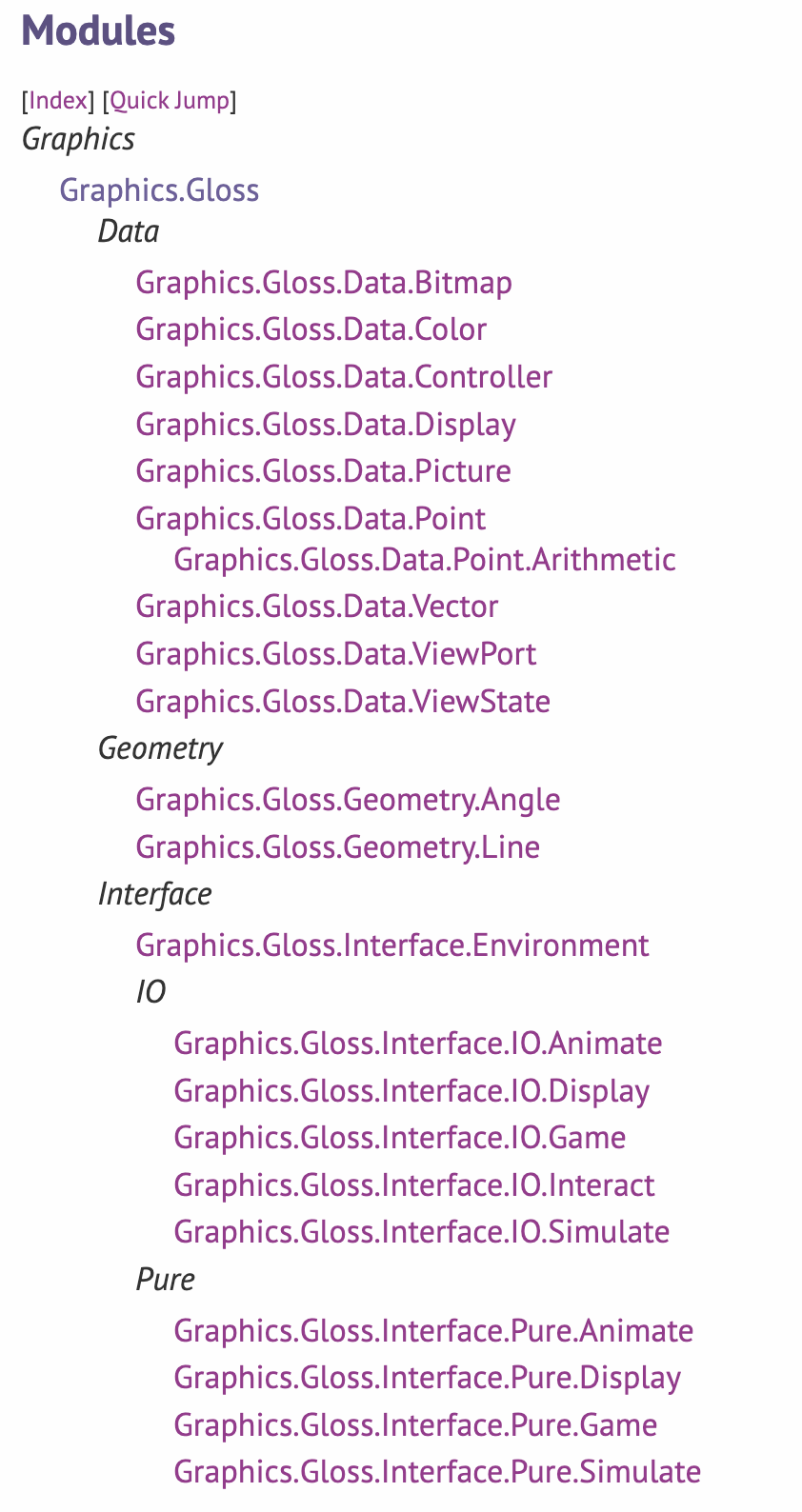Overview
Library API documentation is typically autogenerated from code comments, to create online interactive docs. For example, gloss is a package for 2D animation and games. Here are its API docs, where you can find the following package list:

For well-maintained packages, you should expect to find some explanation of the package's goals and uses either on this front page or in the top-level module (here Graphics.Gloss).
Warning
Many published packages are experimental code, not intended for serious use. To get a sense of which packages to use, see this guide.
In general, avoid packages if they have not been updated for a few years.
How to read Haskell documentation¶
Haskell's expressive types are usually very helpful in understanding how to use a library. For example, the following function appears near the top of the docs in the top level module:

From the type signature, we see that we get a runnable process (i.e. a value of type IO ()) if we supply a few arguments, like Color and a function Float -> Picture.
We can then understand what Picture is by following the link, to see its definition:

Default libraries¶
Haskell's Prelude library is automatically imported into every module, and includes many familiar functions and types, like take and Maybe. It is
Created: January 8, 2023